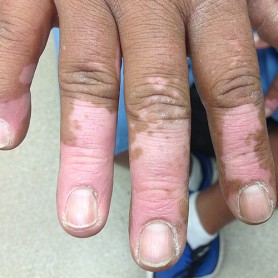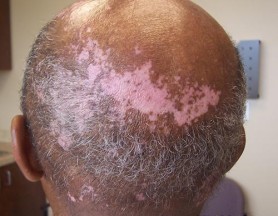Vitiligo is a non-contagious skin condition that affects 1-2% of the population, which is approximately 2-4 million people in the United States! Vitiligo is a patterned loss of melanin pigment resulting from the destruction of melanocytes. Melanin pigment defines color in the hair and skin and is produced by cells called melanocytes. If melanocytes die or can no longer produce melanin, the skin becomes lighter or completely white.It is rare for your skin pigmentation to return on its own without the help of a treatment. However, if your skin does return to its natural color, you many still have vitiligo. The loss of pigmentation and how the pigmentation takes its course differs between each person. There is no way to detect the severity of how much pigment a person will lose after diagnosis. Many people try disguising vitiligo with makeup or self-tanning compounds to make their pigmentation appear less noticeable. While none of these methods help cure the disease, they can improve the visibility greatly. If you’re tired of simply covering up your skin pigmentation, make an appointment with us and we can work with you to find a solution. Below is a list of vitiligo treatments that we may recommend based on your symptoms and needs.
Vitiligo Treatments
Excimer Laser
The XTRAC® Excimer laser is a targeted laser that we use to deliver a focused beam of UVB light, through a unique delivery system, and targets the hypopigmentated patch of skin. While avoiding harm to the surrounding healthy tissue, we are able to successfully bring pigment back to areas of the skin suffering from discoloration.
Phototherapy
Phototherapy, or UV light, is a successful way to help bring back pigmentation to the skin. Clinical studies have shown that UVB light is the preferential wavelength for stimulating melanocytes to initiate the repigmentation response in vitiligo patches, bringing the color back to your skin.





